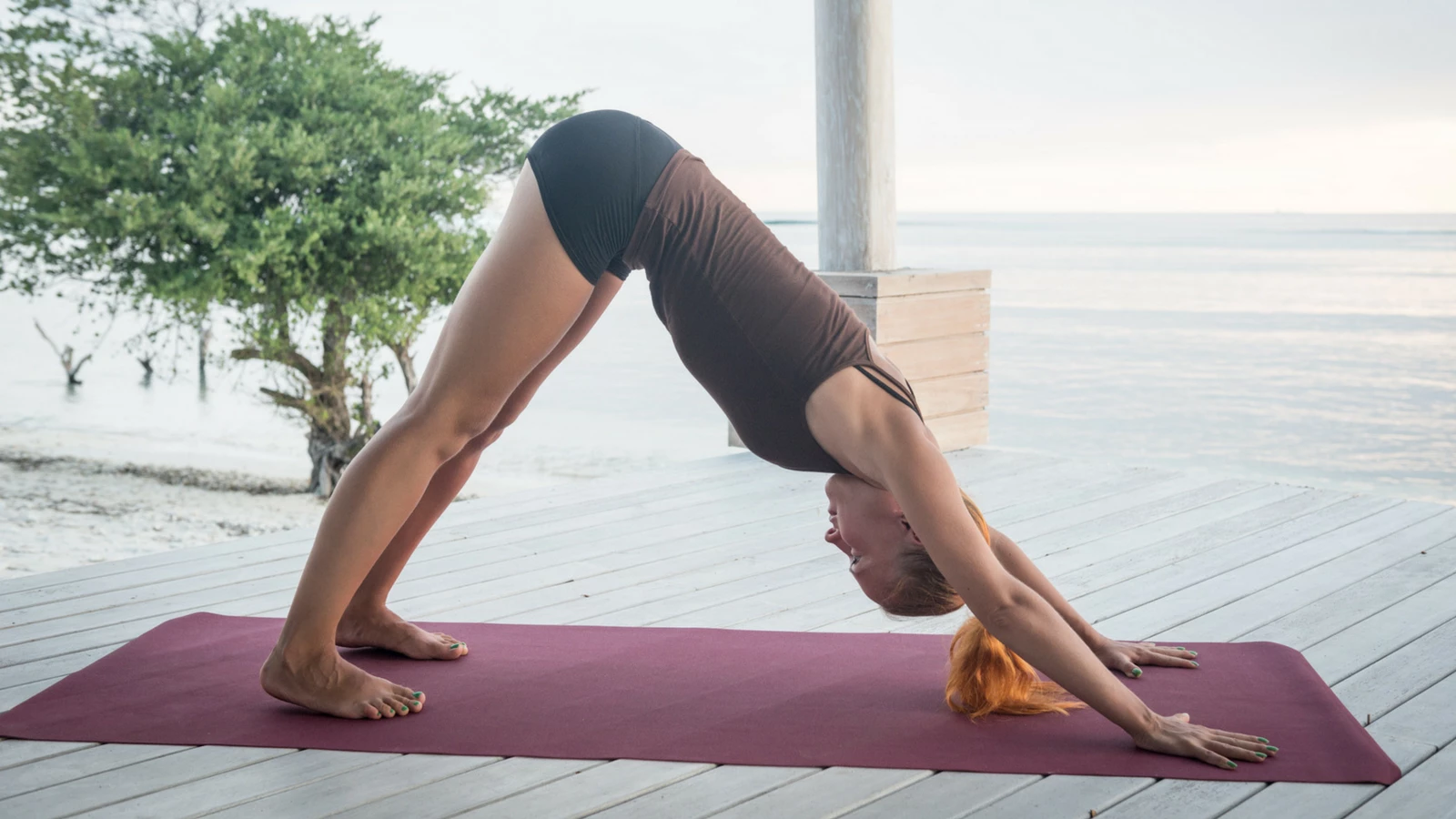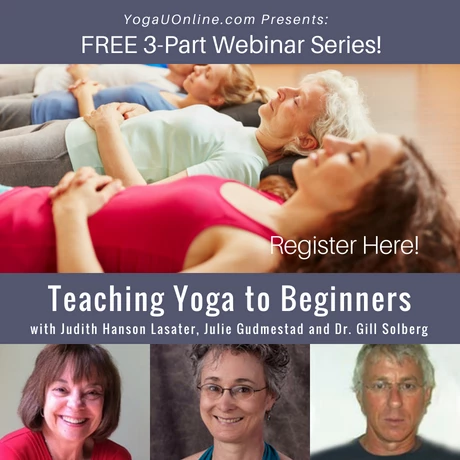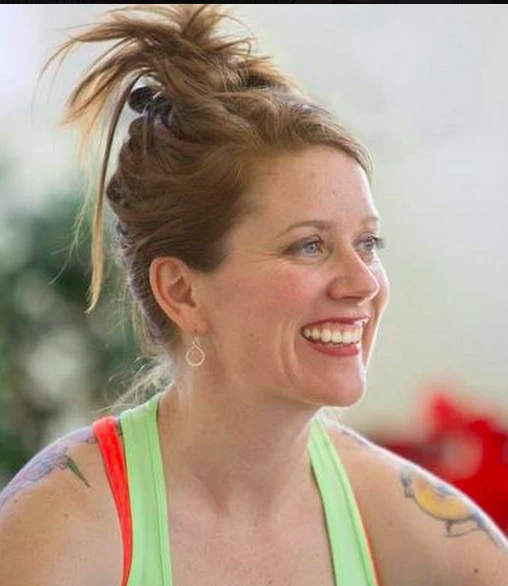Yoga for Beginners: 3 Great Reasons NOT to Teach Downward-Facing Dog Pose

When I first started practicing yoga almost 20 years ago, Downward-Facing Dog was my go-to yoga pose. It made my whole 25-year-old body feel good. From the beginning, even when I couldn’t get my heels to the ground or release my shoulders away from my ears, I always felt pretty comfortable in the pose. And once I could get my heels firmly down on the ground, well, hallelujah! I’ve loved it ever since. Even now, if there’s one pose I’m going to do during the day–besides Savasana–it’s Downward-Facing Dog.
In her book, 30 Essential Yoga Poses for Beginning Students and Their Teachers, Judith Hanson Lasater says that Downward-Facing Dog is “…virtually a one-pose-cures-all asana,” and then goes on to list more than 10 full-body benefits of this yoga posture. I count Judith as one of my best and most inspiring teachers. I own all of her books, go to as many workshops with her as I can, and trust just about everything she says.
 So when I started teaching yoga, guess what? Downward-Facing Dog was my go-to pose. And when I got that deer-in-the headlights feeling I imagine all new teachers occasionally get (mine usually went something like, “Oh my god, I don’t remember a single yoga pose! What am I supposed to teach next? An entire room full of people are staring at me, holding Triangle Pose, and I can’t remember what comes next in my sequence!”), I could fall back on it. Downward-Facing Dog had become a habit.
So when I started teaching yoga, guess what? Downward-Facing Dog was my go-to pose. And when I got that deer-in-the headlights feeling I imagine all new teachers occasionally get (mine usually went something like, “Oh my god, I don’t remember a single yoga pose! What am I supposed to teach next? An entire room full of people are staring at me, holding Triangle Pose, and I can’t remember what comes next in my sequence!”), I could fall back on it. Downward-Facing Dog had become a habit.
And it’s a good habit. Why? For starters, it’s a great pose. In his book, Yoga: The Path to Holistic Health, B.K.S. Iyengar lists multiple benefits including: calming the brain and gently stimulating the nerves, strengthening the ankles and toning the legs, and helping prevent hot flashes during menopause. Quite a list! Downward-Facing Dog has become a poster child of Western yoga poses. It’s so ubiquitous, in fact, that I’d be hard-pressed to think of the last time I took a class and didn’t do the pose multiple times.
3 Reasons Not to Teach Downward-Facing Dog Pose to Yoga Beginners
Downward-Facing Dog has become a teacher’s pet. The thing is, I’m not quite as enthusiastic about it as I once was. Here are three reasons why I’m humbly suggesting we break the habit (but still love the pose).
1. Let’s Face It: Downward-Facing Dog Is Not a Beginning Yoga Pose
In her article, That Dog Just Won’t Lie Down, Tracey Rich describes it this way: “What is beautiful is to see how within one asana the holistic nature of yoga reveals itself. The down dog is a perfect example with an entire world to explore.” I couldn’t agree more.
I absolutely love beginners and love to teach them, but I need to keep reminding myself that beginners are merely at the border of Tracey’s world. There is no rush to walk any faster than necessary in order to explore the spaces she’s describing.
Let’s face it. In a class of 20 beginning-level students it is difficult, if not impossible, to keep an attentive eye on everyone and every pose. So after watching many people struggle with frustration, push too hard, and miss out on the beauty of the pose, I stopped teaching Downward-Facing Dog to beginners unless it was in a workshop or in a very small class where I could actually “workshop” the pose.
Not everyone agrees with this approach. Many believe, and rightfully so, that Downward-Facing Dog can be taught safely and should be taught to beginners. While idealistically I respect this opinion, I’ve seen too many potential injuries and witnessed too much overall discomfort from my beginners when we practice this pose in a large class to justify holding onto my habit.
Sthira sukham asanam, Patanjali’s Sutras tell us. Abiding in ease is asana.
2. Want to Intimidate New Yoga Students? Teach them Downward-Facing Dog Pose
If your experience is anything like mine, you’ll find it’s the rare beginning yoga student—or even intermediate student—who has truly learned to embody this pose and find all of these benefits. Instead, a lot of what I observe in my yoga students is a long list of limitations and overextensions in Downward Dog.
Their feet are at awkward angles, putting undue stress on their ankles and knees. Their shoulders are squeezed together painfully, making breathing impossible—much less relaxing. The list could go on and on. Of course you can hurt yourself in any pose, but this pose requires so much overall body awareness that it is particularly exacting.
Instead of inspiring curiosity and getting students more interested in yoga, Downward-Facing Dog often just intimidates them. Even worse, with repeated, misaligned practice at home and in class, it injures them. And the biggest tragedy: most students will simply grin and bear it for the length of the class, all the while telling themselves: I must be the only one. Enough of that feeling and they will stop coming back. For good.
Because Downward-Facing Dog appears so straightforward, many people think it is simple. But doing the pose and being in the pose are two very different states—of body, mind and spirit. One is habit; one is presence. Let’s break the habit and open to the now, Downward-Facing Dog or no dog at all.
3. Staying Stuck in the Downward-Facing Dog Pose Habit Doesn’t Cultivate Mindfulness
Part of what we are trying to do as teachers of yoga is create an atmosphere that fosters the quality of mindfulness, what Google’s handy dictionary nicely defines as “a mental state achieved by focusing one’s awareness on the present moment, while calmly acknowledging and accepting one’s feelings, thoughts, and bodily sensations.”
We aim to cultivate that mental state in our students, but I would argue that we are also trying to cultivate it in ourselves through the act of teaching. And the more we are simply defaulting to our habits—whether reminding people to breathe or putting them into Downward-Facing Dog—the less we are remaining present with our students exactly where they are in that moment, and the less we are able to foster mindfulness in each of our practices.
Study with YogaUOnline and Judith Hanson Lasater – Structuring Your Beginner Class: Yoga Sequences for Beginners.
Read another article from writer Olga Kabel – For Pain-Free Shoulders, Cut Down on Dog Poses and Chaturangas.
 Kate has been studying Yoga since 1998, and teaching since 2006, opening her first studio in 2012. She believes her greatest strengths as a teacher are her ability to be nonjudgmental and to foster that quality in her students; her openness to experimentation and individual experience amidst strong + diverse community, and her ability to communicate complex ideas in simple, user-friendly language. Over the past several years, Kate has studied with Judith Hanson Lasater, Ray Long, Max Strom, Aadil Palkhivala, Francois Raoult, and Paula Tortolano Self, among others.
Kate has been studying Yoga since 1998, and teaching since 2006, opening her first studio in 2012. She believes her greatest strengths as a teacher are her ability to be nonjudgmental and to foster that quality in her students; her openness to experimentation and individual experience amidst strong + diverse community, and her ability to communicate complex ideas in simple, user-friendly language. Over the past several years, Kate has studied with Judith Hanson Lasater, Ray Long, Max Strom, Aadil Palkhivala, Francois Raoult, and Paula Tortolano Self, among others.
Kate is a regional expert in Gentle, Beginners, and Restorative Yoga, and has created a unique blend of mindfulness, conscious breathing exercises and supported, simple poses for her classes. In 2013/2014, Kate served as a Yoga Ambassador for Lululemon Athletica, and continues to be involved in service and local business in Kansas City. She is currently working on her first book about the gentle art of teaching beginners.



